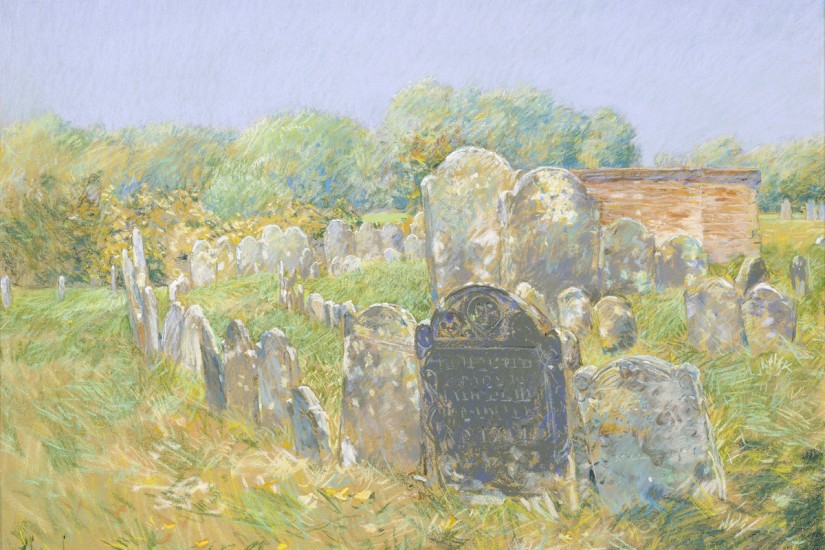Boston physician Jacob Bigelow was also concerned about the unsanitary conditions in cemeteries. In 1825 he led a meeting of civic leaders to address the public health concerns around old burial grounds—where bodies scarcely had time to decompose before the ground needed to be reopened to admit another—and discuss the potential for a new kind of space that would elevate nature. As he argued in his speech “A Discourse on the Burial of the Dead,” presented in 1831 to the Boston Society for the Diffusion of Useful Knowledge, “when nature is permitted to take its course, when the dead are committed to the earth under the open sky, to become early and peacefully blended with their original dust, no unpleasant association remains.” Rather than placing the dead under ominous skulls and bones in festering burial grounds, why not let them rest eternally in a rustic landscape where they would have room to become one with nature? This change, Bigelow believed, could alleviate societal anxiety around death.
That year a Massachusetts Horticultural Society committee implemented Bigelow’s idea in Cambridge. On seventy-two acres that featured forests, wetlands, and hills, Mount Auburn Cemetery was founded. “We stand, as it were, upon the borders of two worlds,” said U.S. Supreme Court justice Joseph Story at a dedication ceremony on September 24 of that year. He exalted the natural setting and how its cycles embodied ideas of salvation, from the “tree that sheds its pale leaves with every autumn, a fit emblem of our own transitory bloom,” to “the evergreen, with its perennial shoots, instructing us that ‘the wintry blast of death kills not the buds of virtue.’ ” He concluded by declaring, “Here let us erect the memorials of our love, and our gratitude, and our glory.”
Mount Auburn’s ensuing popularity inspired a wave of rural cemeteries around the country, including Bangor, Maine’s Mount Hope Cemetery, founded in 1834; Philadelphia’s Laurel Hill Cemetery, founded in 1836; and Brooklyn’s Green-Wood Cemetery, founded in 1838. The public flocked to them not only to mourn but also to stroll among the trees and tombs and maybe spread out a picnic next to an obelisk or pick up a souvenir stereoscopic image. When landscape architect Andrew Jackson Downing, who had helped design the Evergreens Cemetery in Brooklyn, argued for more public parks and gardens in the 1840s and ’50s, he focused on this booming rural cemetery movement. Jackson wrote in 1848 that, based on “the crowds of people in carriages, and on foot, which I find constantly thronging Green-Wood and Mount Auburn, I think it is plain enough how much our citizens, of all classes, would enjoy public parks on a similar scale.”
